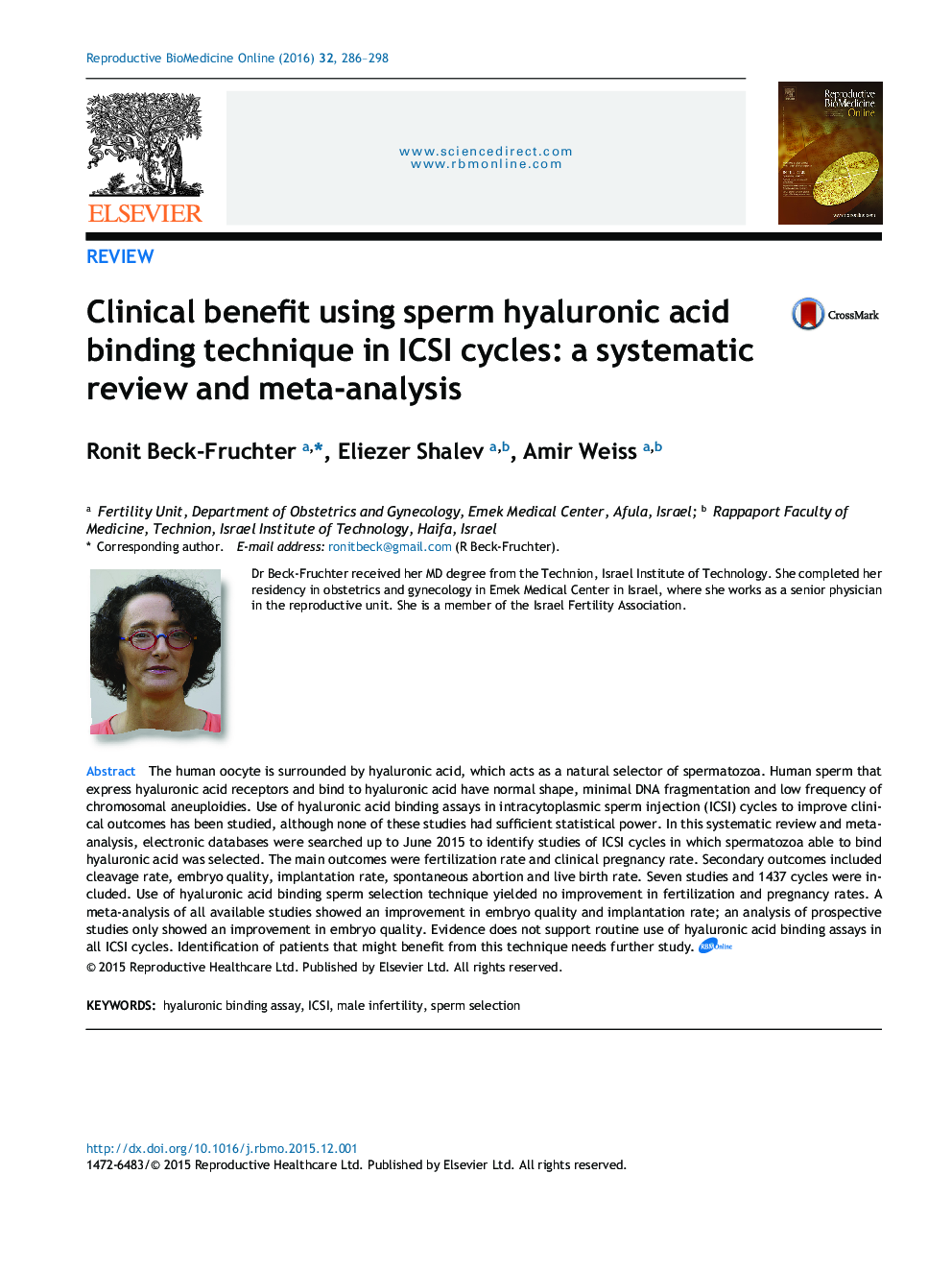| Article ID | Journal | Published Year | Pages | File Type |
|---|---|---|---|---|
| 6188554 | Reproductive BioMedicine Online | 2016 | 13 Pages |
â¢The human oocyte is surrounded by hyaluronic acid, which acts as a natural selector.â¢Only spermatozoa that express HA receptors are capable of in-vivo fertilization.â¢Using HA binding assay yielded no improvement in fertilization and clinical pregnancy rates.â¢Improvement in embryo quality was found on meta-analysis of the prospective studies.â¢Further research is strongly encouraged.
The human oocyte is surrounded by hyaluronic acid, which acts as a natural selector of spermatozoa. Human sperm that express hyaluronic acid receptors and bind to hyaluronic acid have normal shape, minimal DNA fragmentation and low frequency of chromosomal aneuploidies. Use of hyaluronic acid binding assays in intracytoplasmic sperm injection (ICSI) cycles to improve clinical outcomes has been studied, although none of these studies had sufficient statistical power. In this systematic review and meta-analysis, electronic databases were searched up to June 2015 to identify studies of ICSI cycles in which spermatozoa able to bind hyaluronic acid was selected. The main outcomes were fertilization rate and clinical pregnancy rate. Secondary outcomes included cleavage rate, embryo quality, implantation rate, spontaneous abortion and live birth rate. Seven studies and 1437 cycles were included. Use of hyaluronic acid binding sperm selection technique yielded no improvement in fertilization and pregnancy rates. A meta-analysis of all available studies showed an improvement in embryo quality and implantation rate; an analysis of prospective studies only showed an improvement in embryo quality. Evidence does not support routine use of hyaluronic acid binding assays in all ICSI cycles. Identification of patients that might benefit from this technique needs further study.
